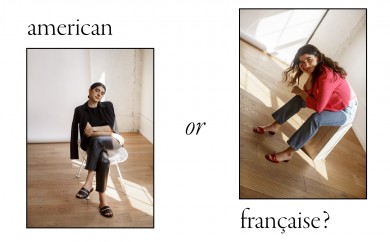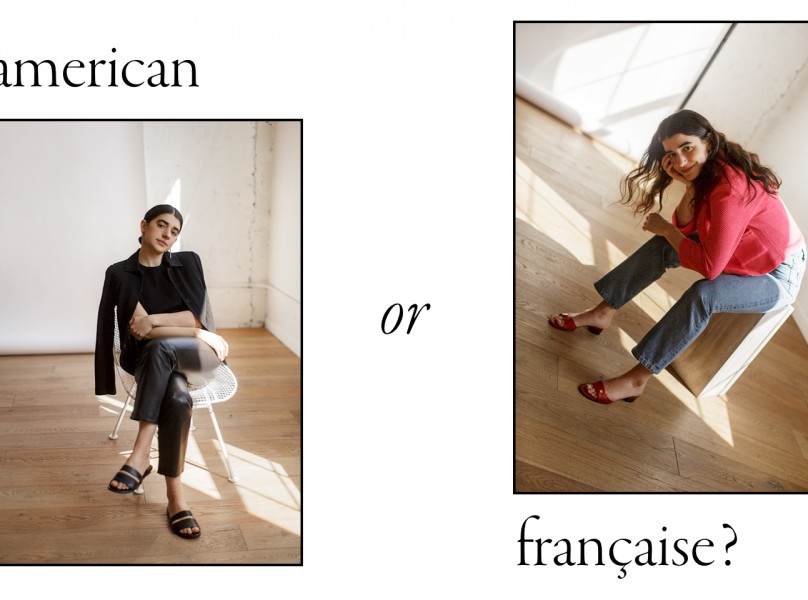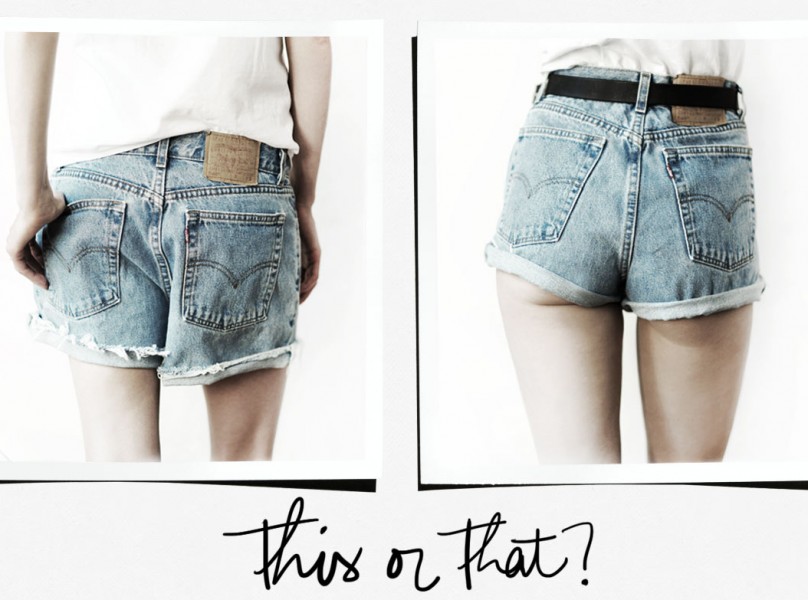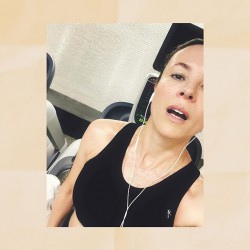Why You Should Get Your Vagus Nerve Stimulated
6 years ago by
I’m sitting on a massage table, legs dangling over the edge and saying ‘ahhhh’. My therapist (is that what you even call him?) Sam isn’t looking at my tonsils, or my tongue. He’s inspecting my uvula (or, to use the technical term ‘the dangly throat thing’).
I’m here to get my vagus nerve stimulated, which is far less kinky than that sentence implies. I’ve written about the vagus nerve a couple of times now, specifically its connection to gut health. But despite being an unashamed gut-health junkie, who will try anything if it promises me a good digestive time, this treatment is a new experience for me. Needless to say, I’m just a bit excited, because meeting Sam is kind of the gut health equivalent of a one-on-one with Batman.
Sam, (or rather, Samuel Minkin BHSci Musculoskeletal Therapy, Dip. Fitness, PBMt practitioner and taVNS practitioner) works out of MO+ clinic in Sydney’s famed Bondi Junction. Aside from having an impressive list of qualifications behind him, he’s also one of the few experts in Australia with a specialty in the vagus nerve, and non-invasive auricular vagus nerve stimulation – which is what I’m getting today.
But back to my uvula. Sam is inspecting it (specifically, the way it moves) because it holds the key to my treatment. He explains, “the uvula and the soft palate in the back of the mouth is supplied by the vagus nerve. By assessing the uvula’s position, movement and any deviation I can literally see the state of the vagus nerve and correlate this with other examinations such as the sensory ear exam and gag reflex assessment to decipher treatment. As an example, sideways deviation of the uvula almost always indicates low tone on the corresponding side of the vagus nerve.” So what is mine telling him? Not surprisingly, that my gut needs a little help – which is obviously why I’m here. I lay down on the bed and Sam clips some pegs to my ears, where, evidently the auricular branch of both vagus nerves innervates the skin. Sam explains what’s about to go down in the 30-minute, non-invasive stimulation treatment.
“By using electrical current on these areas of the ear we can increase the electrical activity (tone) in the nerve throughout the rest of the nerve pathway. The particular pattern of different frequencies and pulse width is vital to getting clinically significant benefits.”
The goal is to increase the tone of the vagus nerve(s) which is the bridge between the gut and the brain (often called the gut-brain axis). Toning up this guy means better sensory feedback to the brain from around the body vice versa, meaning the whole body (and your brain… and your gut) all function better. It also activates the parasympathetic nervous system and means your body can relax faster after stress – so you’re quicker to recover from stressful situations.
As I settle into the treatment I first need to get over the sensation of my ears buzzing like I’m standing too close to a speaker pumping some fat bass at a club. That, and the clips feel like… well like someone has clipped some pegs on my ears. It’s not uncomfortable per se, but I won’t be calling them up for a good time either.
To take my mind off it, I ask Sam what would have happened if my dangly thing had moved the other way. “There are two vagus nerves – a left and a right,” he says, “the left mainly goes to digestive organs and the right goes to the heart and has greater effects on the brain and mental health.” So moving the other way would have indicated that the treatment should perhaps focus on my mental health. A light bulb goes off in my head – and no it’s got nothing to do with the electrical currently coursing through me. “Hold up,” I say, “so is there a link between mental health conditions and poor vagal tone?”
The answer of course, is yes. But perhaps even more exciting is that this type of stimulation can (and is!) being used in the treatment of conditions like anxiety and treatment resistant depression. That’s because the vagus is the main parasympathetic nerve in the body – and the parasympathetic nervous system controls everything from mood, immune response, as well as moving the body from a stressed state to one of calm and relaxation – the state where the body can both heal and repair.
“Chronic stress inhibits the vagus nerve at a cellular level which reduces its ability to increase norepinephrine (adrenalin) in the frontal lobe of the brain. As the frontal lobe is responsible for personality, mood, emotional regulation and motivation via the neurotransmitter dopamine, any decrease in function can produce states such as depression and anxiety,” says Sam. But the effect is twofold since a healthy gut microbiome actually increases the feel-good hormone, serotonin… and the gut microbiome is regulated by – you guessed it – the vagus nerve. And of course the connection between gut health and mental health is well documented, but it doesn’t even stop there.
“One other way that the vagus nerve helps with depression and anxiety is through the spiking of BDNF (brain derived neurotrophic factor), which is needed for neuroplastic change. This facilitates the neuroplastic changes that are required to go from depressed to non-depressed states long-term.”
It’s all a lot to take in. Especially for someone currently laying horizontal, now sweetly lulled by the buzzing through her body. But, actually studies on the vagus nerve and the link to mental health have been going on for years, with vagus nerve stimulation being used in conjunction with more traditional treatments for mood and anxiety disorders, treatment resisitant depression, drug resistant depression, major depressive disorder and even PTSD. On top of this, it was (and still is today) used as a way to treat epilepsy.
The journalist (and skeptic) in me is itching to ask the burning question now – but how? How can these little ear clips, and a 30-minute lie-down change something that is so ingrained? Unfazed by the interrogation Sam answers, “there are various regions of the brain that strongly interact with each other known as the Default Mode Network (DFN). In depression, fMRI scans of the brain shows that the DMN is overactive. Direct vagus nerve stimulation has been shown on fMRI to quieten DMN activity. People feel improvements in mood but also with increased brain derived neurotrophic factor (BDNF) from vagus stimulation, neuroplasticity literally allows the brain to rewire its self to be happy, positive and motivated and the person to be in control of their emotions.”
Sam also tells me about the success he’s had with his own patients, including a 19-year-old living with treatment-resistant depression who came to him having tried everything – including electro convulsive therapy. Referred to him by a clinical psychiatrist, she started the treatment and within three weeks they were able to reduce her lithium.
I’m having a hard time digesting all the information because it all sounds too good (and painless!) to be true. And with only a couple of treatments a week (assessing on a weekly basis and of course adjusting for each personal circumstance), it seems to me that everyone should be on board. That and the fact that since 1992 (when studies first begun on transauricular vagus nerve stimulation begun) Sam tells me there have been no known side effects, it does not interfere with medication and can be easily used along-side other treatments and medications. This is, of course, like any medical treatment if you are receiving from a licensed practitioner – one that understands the mechanisms and contraindications to therapy.
So is that really it? A few months of weekly treatments and you’re magically vagal-toned for the rest of your life? Well that is the big unknown, though realistically the answer is probably not. Because while the treatment’s goal is to restore the vagus nerve to optimal tone so it can self regulate, everyday stress, sickness, viruses, and antibiotics can throw it out again. It’s all a part of the gut health journey.
My treatment is coming to an end. I feel like I’m coming out of a weird little half-hour nap, a tiny bit disorientated and lightheaded. But perhaps that’s just the dump of information that’s just descended on my brain. Other than that, I don’t feel any different. It’s not like emerging from a facial with the skin of a teenager. That said, I haven’t signed up to a course of treatment so I’m not expecting monumental shifts in wellbeing after a single shot. So I leave, with my head full, and interest in the vagus nerve piqued again.
Days later, I was talking to my partner about my digestion (yes, this is just one of the sexy pillow talk convos we have). “Something is different,” I say, “what have we been eating? I’m, like ridiculously regular…”
He looks at me, on the verge of an eye roll, after being the recipient of my post-stimulation monologue. A beat passes (OK, maybe five). And then the penny drops. I guess those ear clips were doing something after all.



























































Sounds very intriguing! How would I find a practitioner in LA.
Pourquoi vous ne donnez aucune explications au fait que le blog n’est plus traduit en français. C’est dommage vraiment j’aimais bien vos articles et le blog de Garence .
I love doing breathing techniques for vagus nerve stimulation. My favorite is the one I learned on Ann Merle Feldman’s Blog, it is also good for relaxing the Triple Warmer/Limbic System and feels really good.
I love this technics of breathing
Jim Donovan has a book about sound healing/ brain humming using the voice or chanting / think of monks or Native Americans, too stim the Vagas nerve